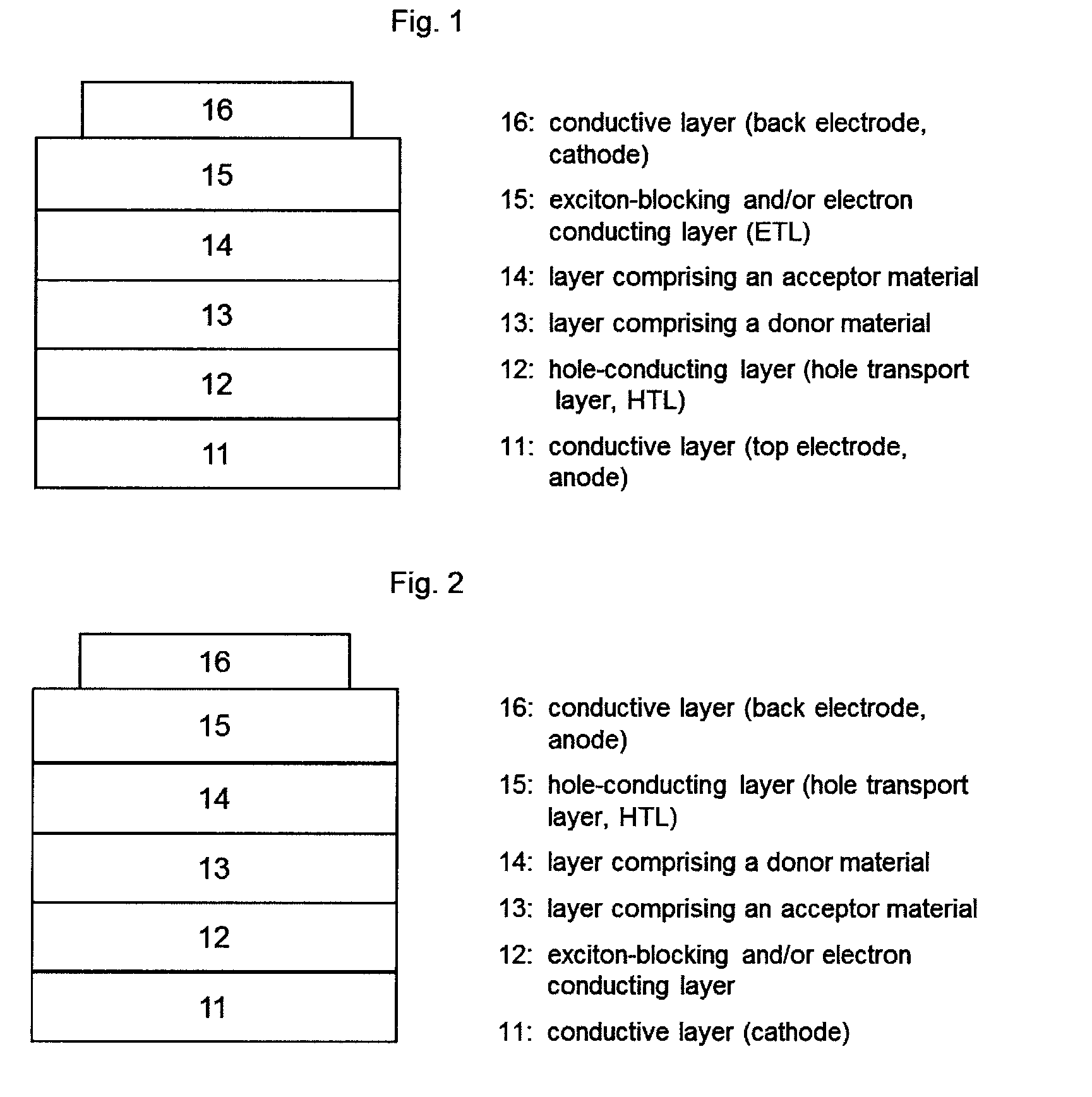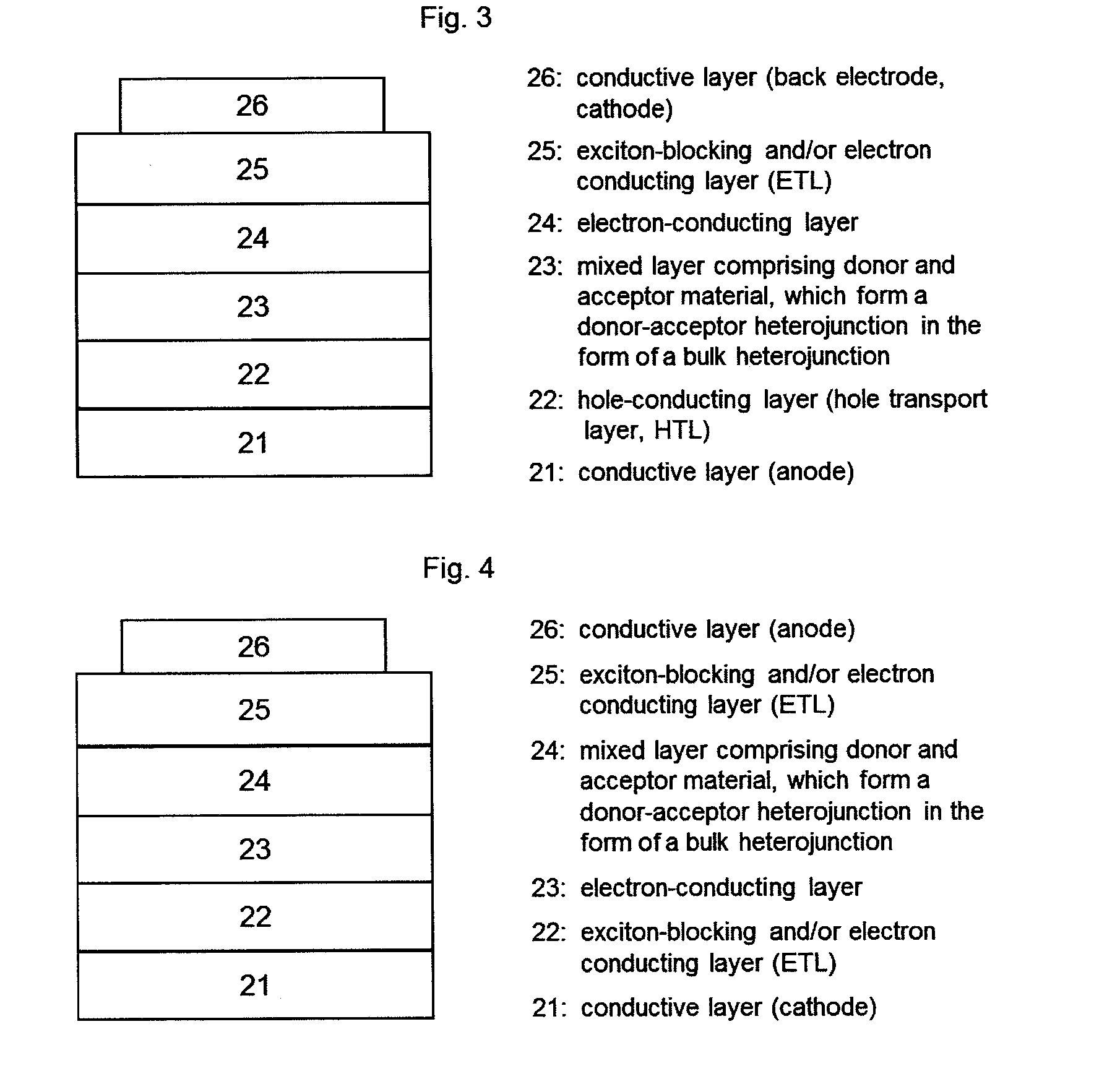Compounds with terminal heteroarylcyanovinylene groups and their use in organic solar cells
a technology of cyanovinylene group and compound, which is applied in the field of photoactive materials, can solve the problems of limited raw material availability, high cost of energy conversion process, and impede the widespread use of solar energy to harness the potential of the sun, and achieves superior storage stability, high mobility, and large current on/off ratio
- Summary
- Abstract
- Description
- Claims
- Application Information
AI Technical Summary
Benefits of technology
Problems solved by technology
Method used
Image
Examples
Embodiment Construction
[0043]In the context of the invention, the expression “photoactive material” represents a material having a photoactive heterojunction formed by at least one hole-conducting organic substance (donor substance, p-semiconductor) and at least one electron-conducting organic substance (acceptor substance, n-semiconductor).
[0044]In the context of the present application, an organic substance is referred to as “hole-conducting” when the charge carriers which are formed as a result of light absorption and charge separation at a heterojunction (“photogenerated charge carriers”) are transported within the material in the form of holes. Accordingly, an organic substance is referred to as “electron-conducting” when photogenerated charge carriers are transported within the material in the form of electrons.
[0045]A “heterojunction” refers to an interface region between the electron-conducting and the hole-conducting substance.
[0046]A “photoactive heterojunction” refers to a heterojunction betwee...
PUM
 Login to View More
Login to View More Abstract
Description
Claims
Application Information
 Login to View More
Login to View More - R&D
- Intellectual Property
- Life Sciences
- Materials
- Tech Scout
- Unparalleled Data Quality
- Higher Quality Content
- 60% Fewer Hallucinations
Browse by: Latest US Patents, China's latest patents, Technical Efficacy Thesaurus, Application Domain, Technology Topic, Popular Technical Reports.
© 2025 PatSnap. All rights reserved.Legal|Privacy policy|Modern Slavery Act Transparency Statement|Sitemap|About US| Contact US: help@patsnap.com



